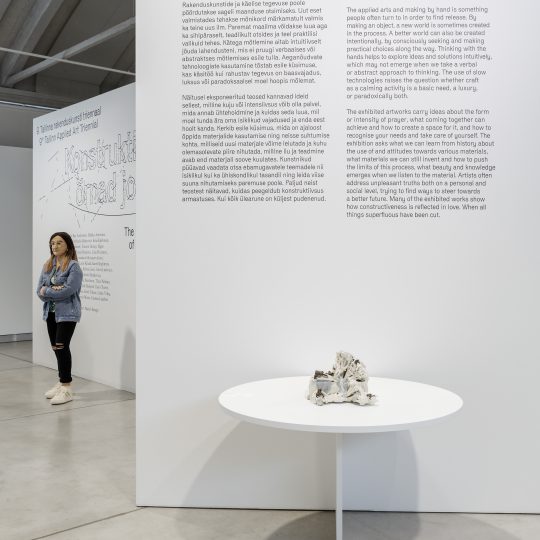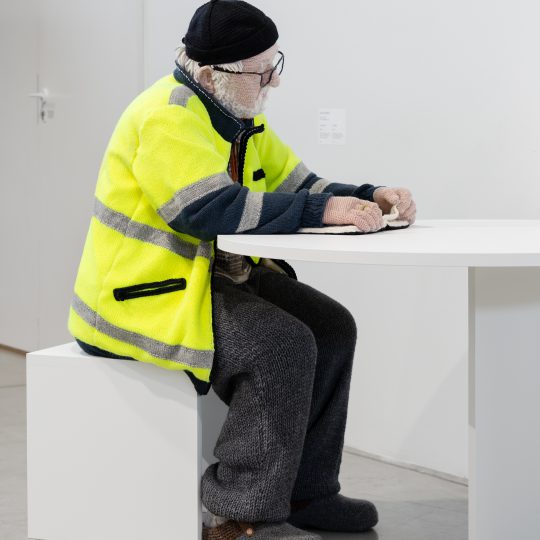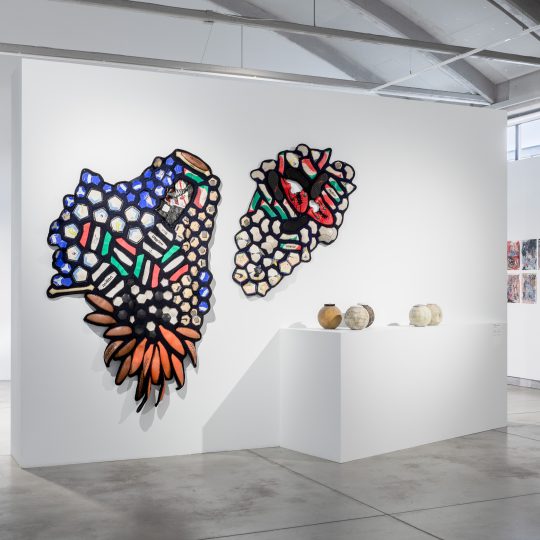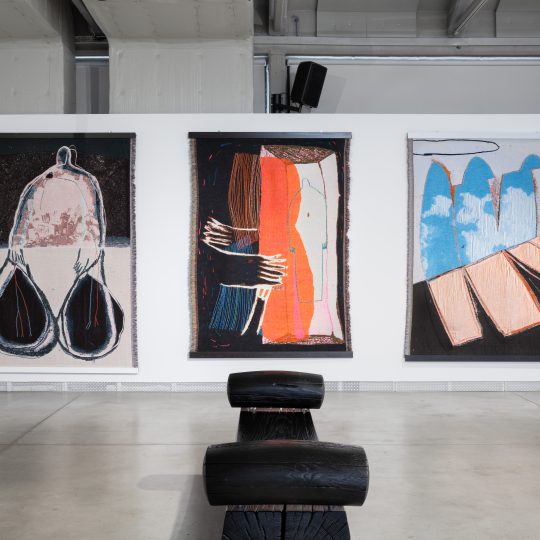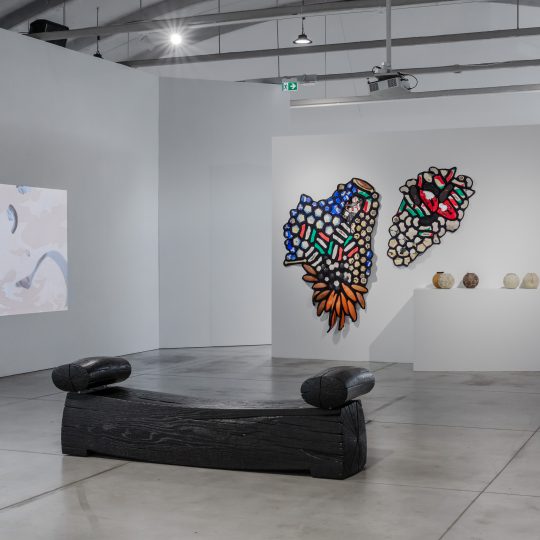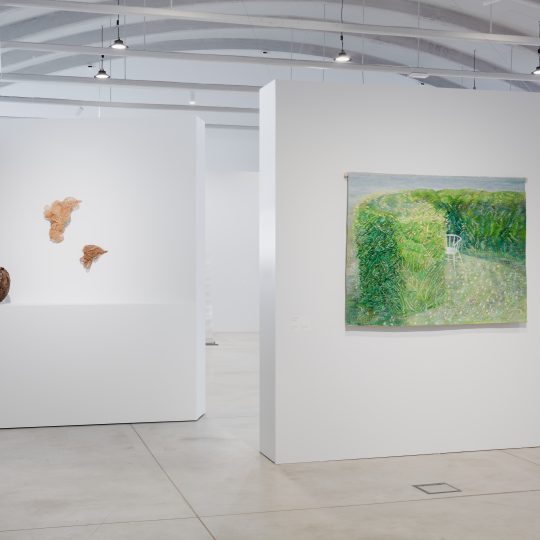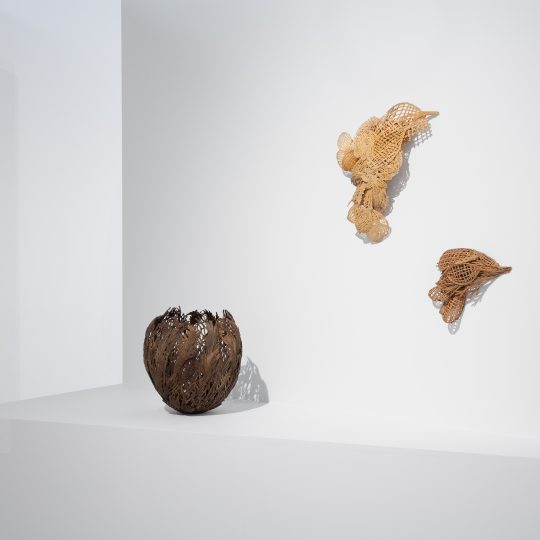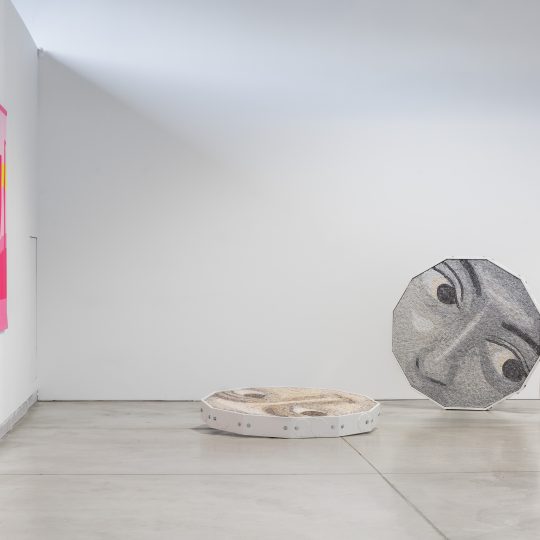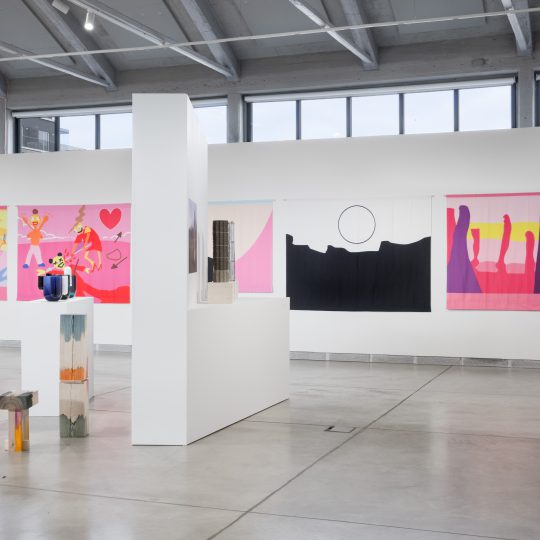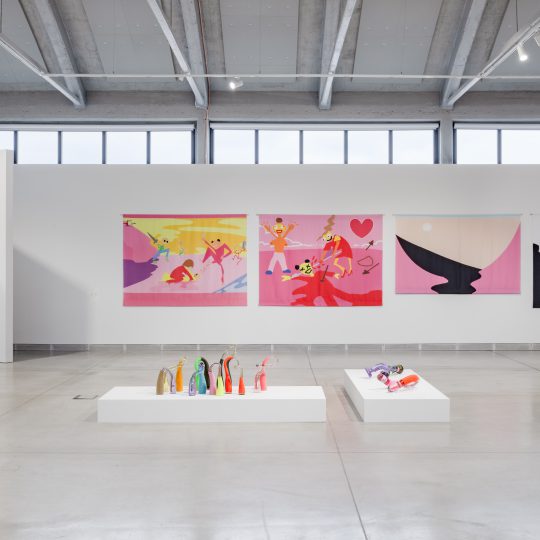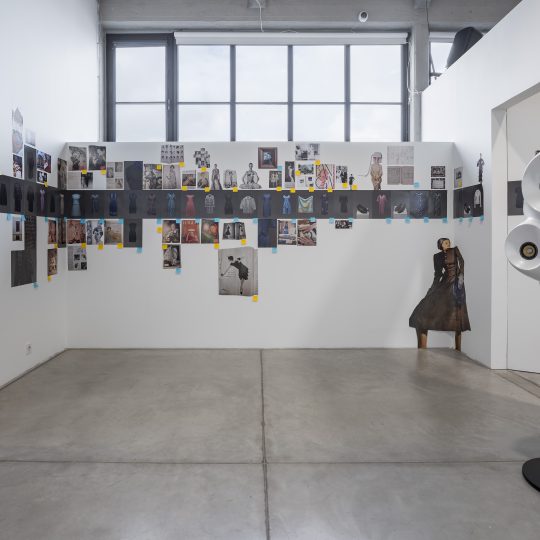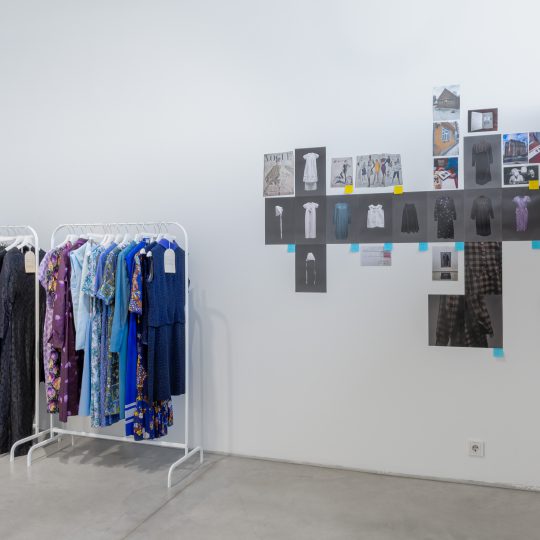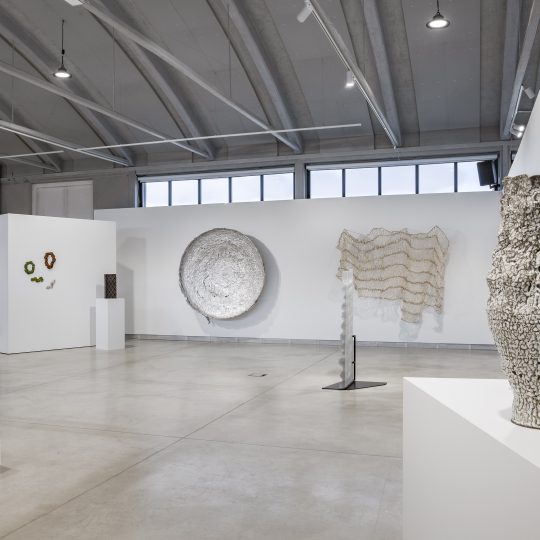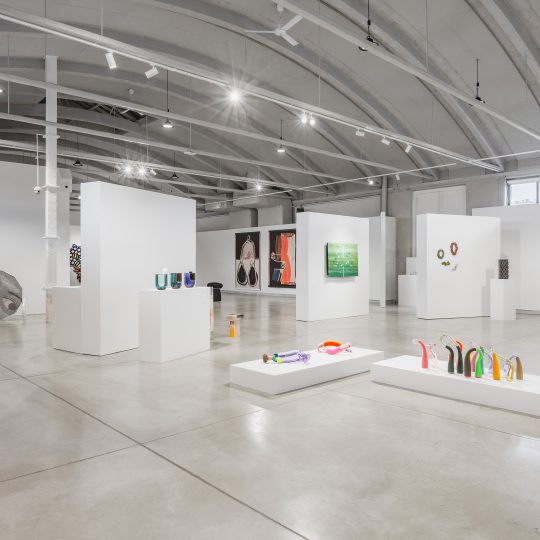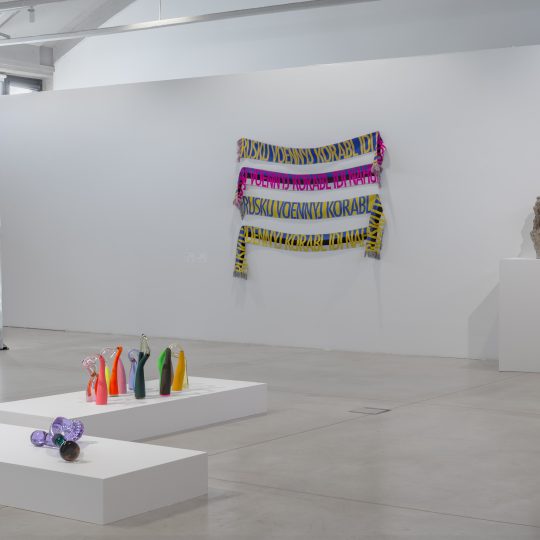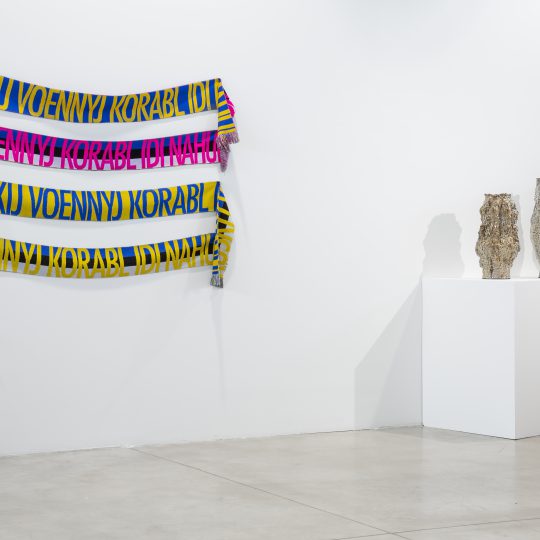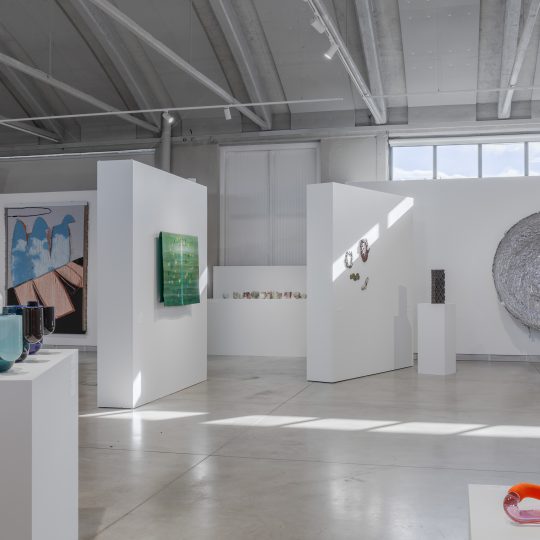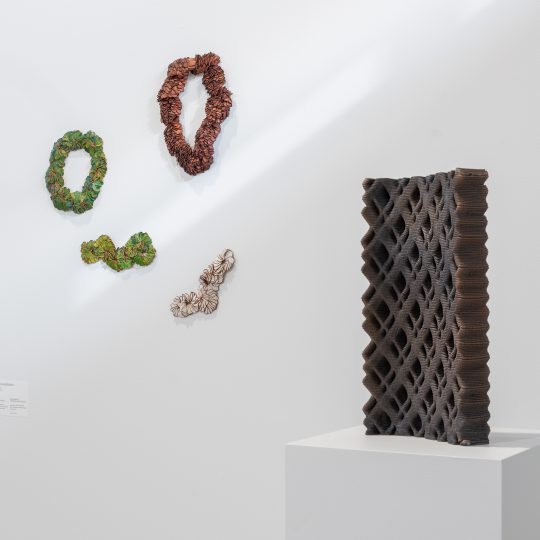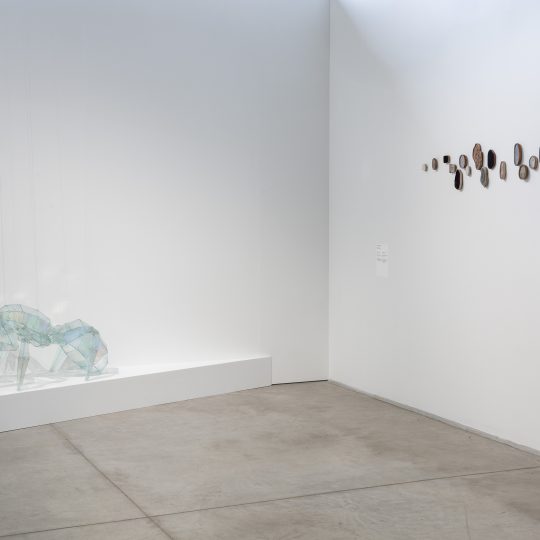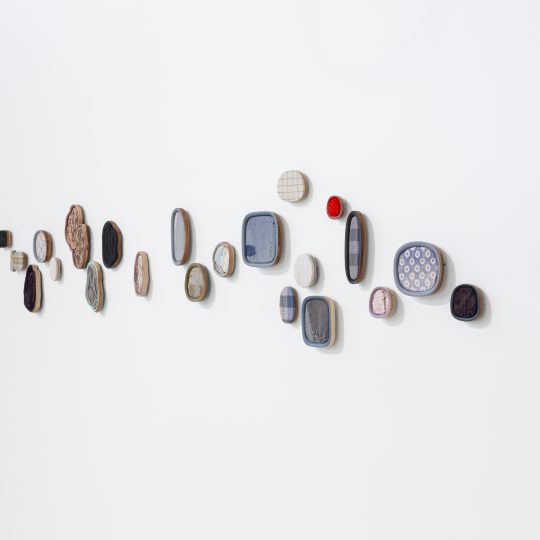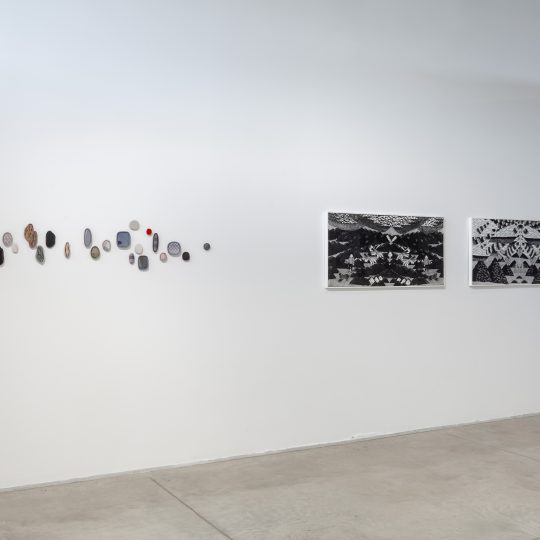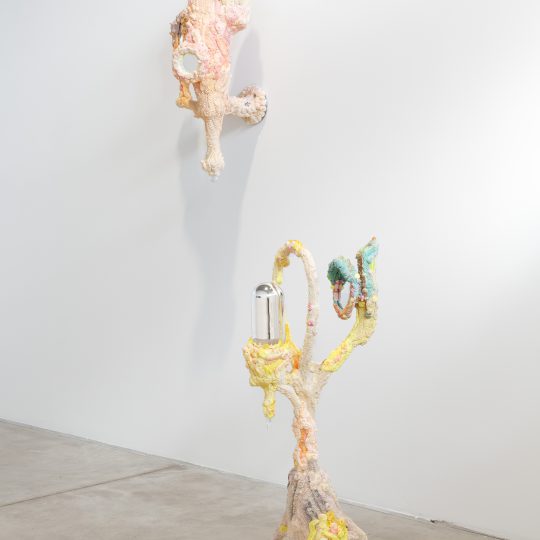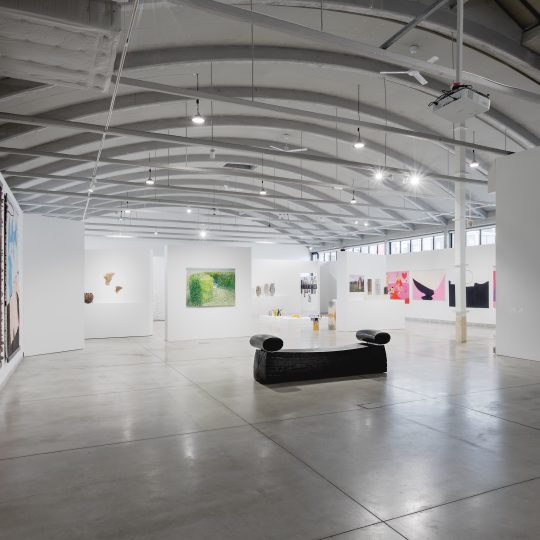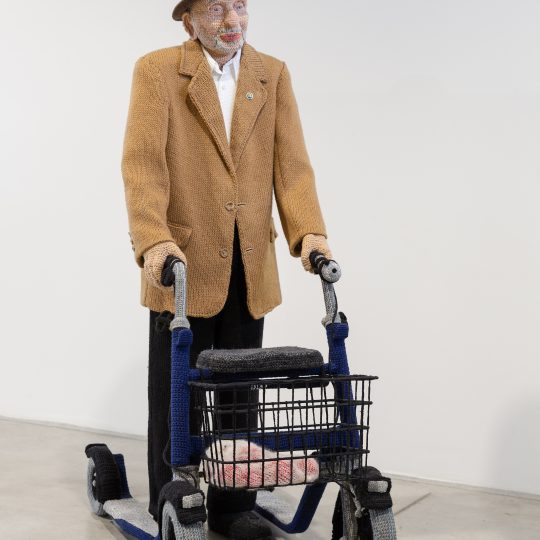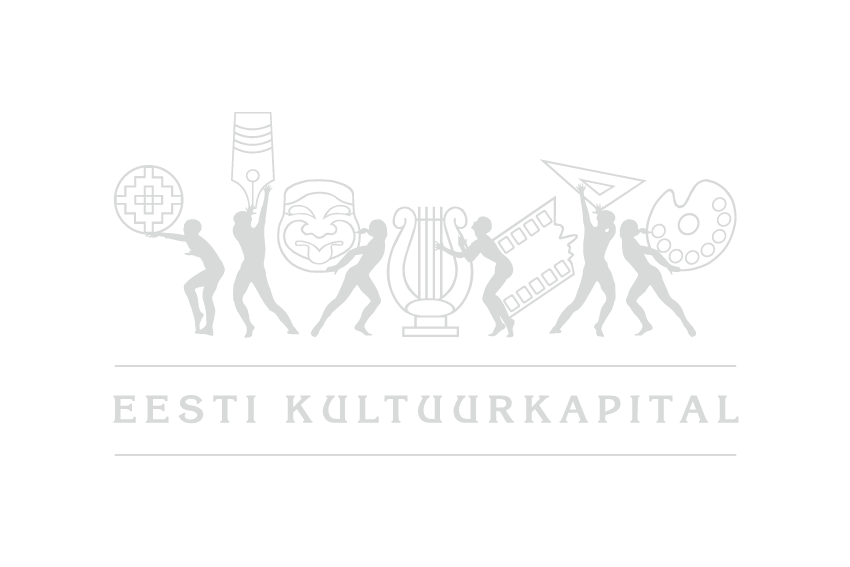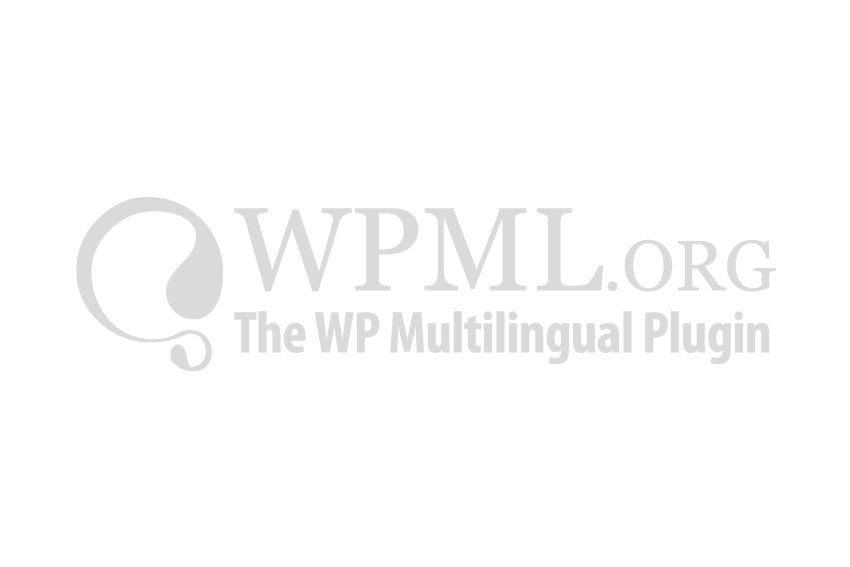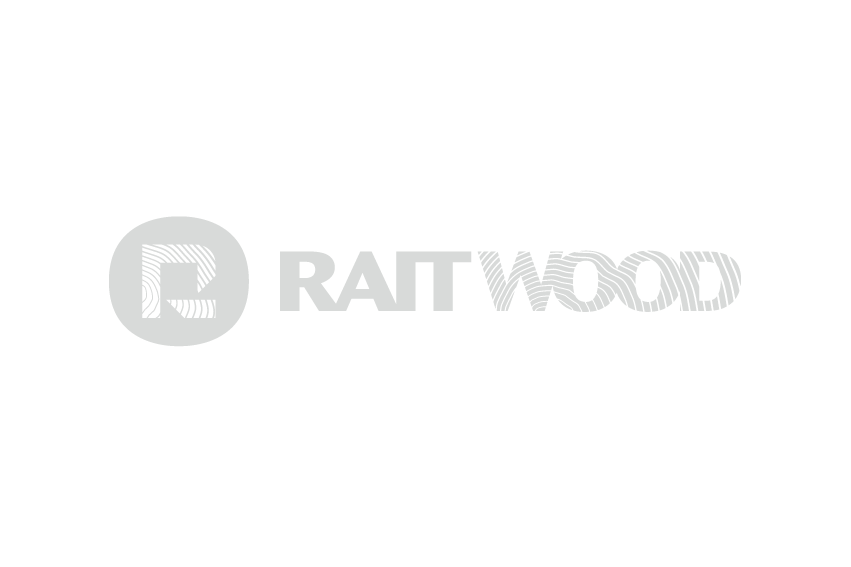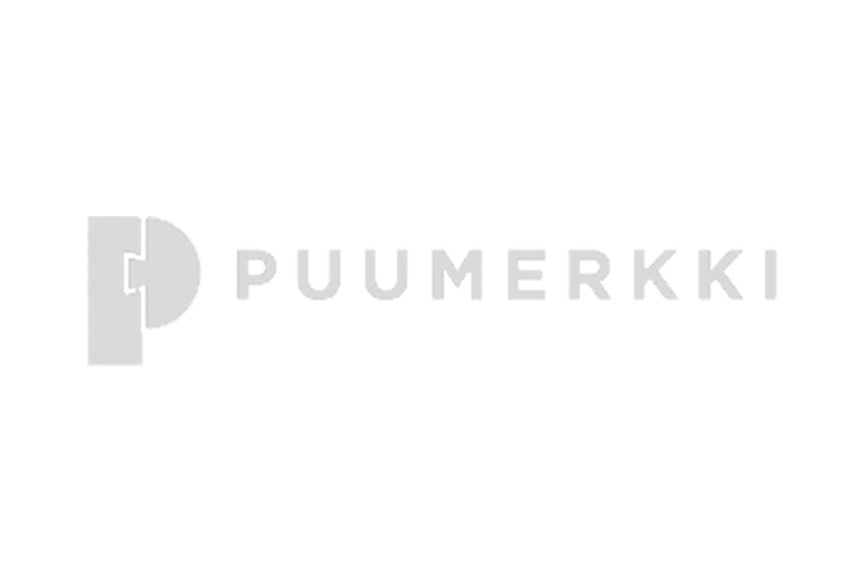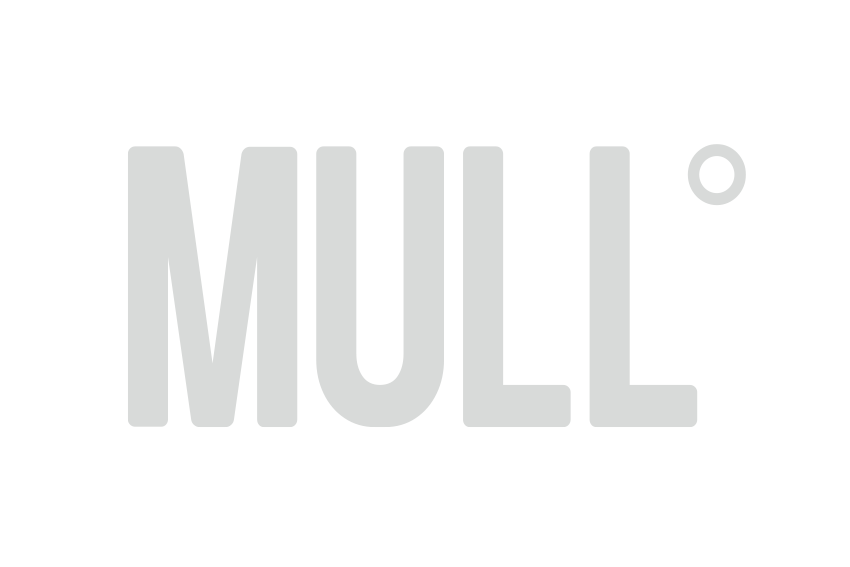
Main exhibition
The main exhibition of the 9th Tallinn Applied Art Triennial The Fine Lines of Constructiveness was open at the Kai Art Center from 5 October 2024 until 16 February 2025.
The exhibition featured artists from the Baltic and Nordic countries, representing fields of applied art and contemporary craft, including a variety of techniques and materials. The main exhibition of the triennial was curated by Maret Sarapu, focusing on constructiveness, rebuilding and moving towards solutions. Artists were selected for the exhibition via an open call and by the curator directly. A record number of 470 artists or artist groups applied for the open call of the 9th Tallinn Applied Art Triennial. The exhibition was accompanied by a catalogue.
Curator: Maret Sarapu
Organisers: Merle Kasonen, Maret Sarapu, Anu Almik, Katre Ratassepp, Keiu Krikman
Design: Kärt Maran
Graphic design: Laura Pappa
Installation: Tõnu Narro, Mihkel Lember, Arvi Anderson
The Fine Lines of Constructiveness
Constructiveness can be found in ideas and acts that contribute to finding solutions and creative progress. It may emerge when means are scarce, energy is low or when it is understood that we need to be gentle with one another. Constructiveness can present as clarity of mind, a willingness to experiment or innovate and make something new, and a desire to look for unexpected collaborations
The applied arts and making by hand is something people often turn to in order to find release. By making an object, a new world is sometimes created in the process. A better world can also be created intentionally, by consciously seeking and making practical choices along the way. Thinking with the hands helps to explore ideas and solutions intuitively, which may not emerge when we take a verbal or abstract approach to thinking. The use of slow technologies raises the question whether craft as a calming activity is a basic need, a luxury, or paradoxically both.
The exhibited artworks carry ideas about the form or intensity of prayer, what coming together can achieve and how to create a space for it, and how to recognise your needs and take care of yourself. The exhibition asks what we can learn from history about the use of and attitudes towards various materials, what materials we can still invent and how to push the limits of this process, what beauty and knowledge emerges when we listen to the material. Artists often address unpleasant truths both on a personal and social level, trying to find ways to steer towards a better future. Many of the exhibited works show how constructiveness is reflected in love. When all things superfluous have been cut.
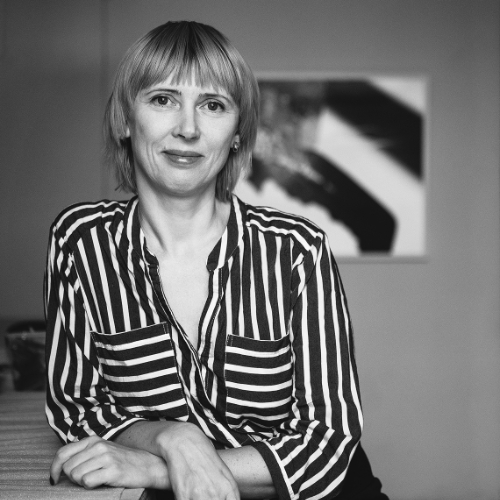
Photo: Terje Ugandi
Curator
Maret Sarapu (1978) is an artist and curator based in Tallinn. She has graduated from the Department of Glass Art at the Estonian Academy of Arts (BA 2002, MA 2005). She has taken additional professional courses and been in artist residencies both in Estonia and abroad, including at the Creative Glass Center of America (USA), the Glass Centre of Sunderland University (UK) and GlazenHuis (Belgium).
She has curated and organised numerous glass art exhibitions in Estonia. Since 2017 she is one of the core team members of the Tallinn Applied Art Triennial. Sarapu is also the curator of the triennial’s main exhibition in 2024.
In addition to exhibitions in Estonia, Sarapu has also participated in group exhibitions in Latvia, Lithuania, Finland, Denmark, Russia, Germany, Turkey, USA. Sarapu’s artworks belong to a number of public collections: Estonian Museum of Applied Art and Design (Tallinn, Estonia), Museum of American Glass (Millville, NJ, USA), Museum of Modern Glass Art (Eskisehir, Turkey) etc.
Her works have won prizes in national art competitions and are on display in several public buildings. These achievements have given Sarapu the experience of creating conceptually rich, aesthetically pleasing and thought provoking compositions as well as equipped her with valuable insights and skills related to large-scale projects and collaborations.
In her work, Sarapu is mostly inspired by everyday life. Often, her aim is to achieve mental well-being and find harmony between intelligence and emotions. In her process, Sarapu alternates between thinking, writing, working in the studio and collaborating with material, which leads to results that give both the artist and the viewer a possibility to make conclusions and generalisations.
As a curator she is interested in constructiveness and the questions of how a constructive and progressive approach can be expressed in applied arts, how art and contemporary craft can serve as a powerful source of perseverance, both in the act of creation and in the messages and symbolism they convey. And how by tapping into the resilience and strength of the human spirit, these creative forms can inspire individuals to push through challenges and find meaning in their struggles.
Artists
Karin Roy Andersson (Sweden), Riikka Anttonen (Finland), Ieva Baltrėnaitė-Markevičė (Lithuania), Sofia Björkman (Sweden), Per Brandstedt (Sweden), Vincent Dumay (Sweden), Signe Fensholt (Denmark), Hanne Haukom (Norway), Liisa Hietanen (Finland), Severija Inčirauskaitė-Kriaunevičienė (Lithuania), Kati Kerstna (Estonia), Lauri Kilusk (Estonia), Karel Koplimets (Estonia), Arja Kärkkäinen (Finland), Krista Leesi (Estonia), Alves Ludovico (Finland), Jennie McMillen (Sweden), Anda Munkevica (Latvia), Kadi Pajupuu (Estonia), Anu Penttinen (Finland), Tiina Puhkan (Estonia), Saara Renvall (Finland), Vilde Rudjord (Norway), Taavi Teevet (Estonia), Margit Terasmees (Estonia), Ketli Tiitsar (Estonia), Linda Vilka (Latvia) and Ellisif Hals, Yuvia Maini and Cassius Lambert (Sweden and Norway) presenting a collaborative work
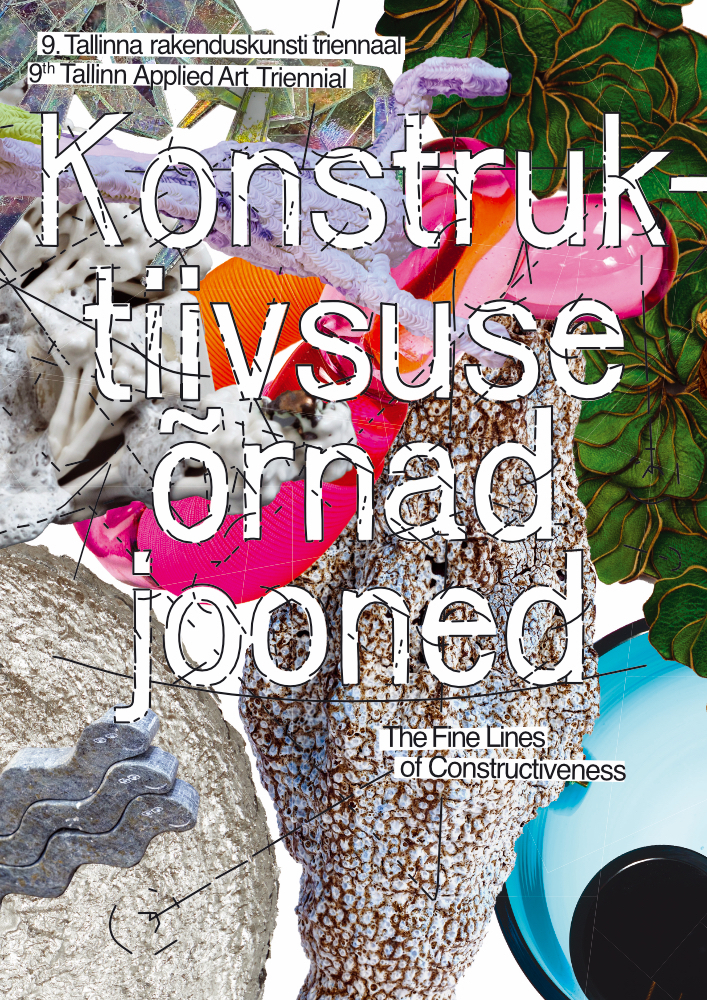
Catalogue
Texsts: Maret Sarapu
Editors: Keiu Krikmann, Michael Haagensen, Katre Ratassepp
Translation: Keiu Krikmann
Design: Laura Pappa
Photos: Õie Ellen Agu, Ineta Armanavičiūtė, Margus Elizarov, Jaan Heinmaa, Francis Howard, Dorte Krogh, Juta Kübarsepp, Marjaana Malkamaki, Marilyn Piirsalu, Urmas Puhkan, Danny Silvermalm, Ansis Starks, Ilmars Znotins, Jarkko Översti, artists
Printing house: Printon AS
ISBN: 978-9949-9906-2-7
Measurements: 217 x 290 mm
Paper: Munken Polar Rough 120 g, MetsäBoard Pro FBB Bright 195 g
Print run: 400
Publisher: Tallinn Applied Art Triennial Society NGO

